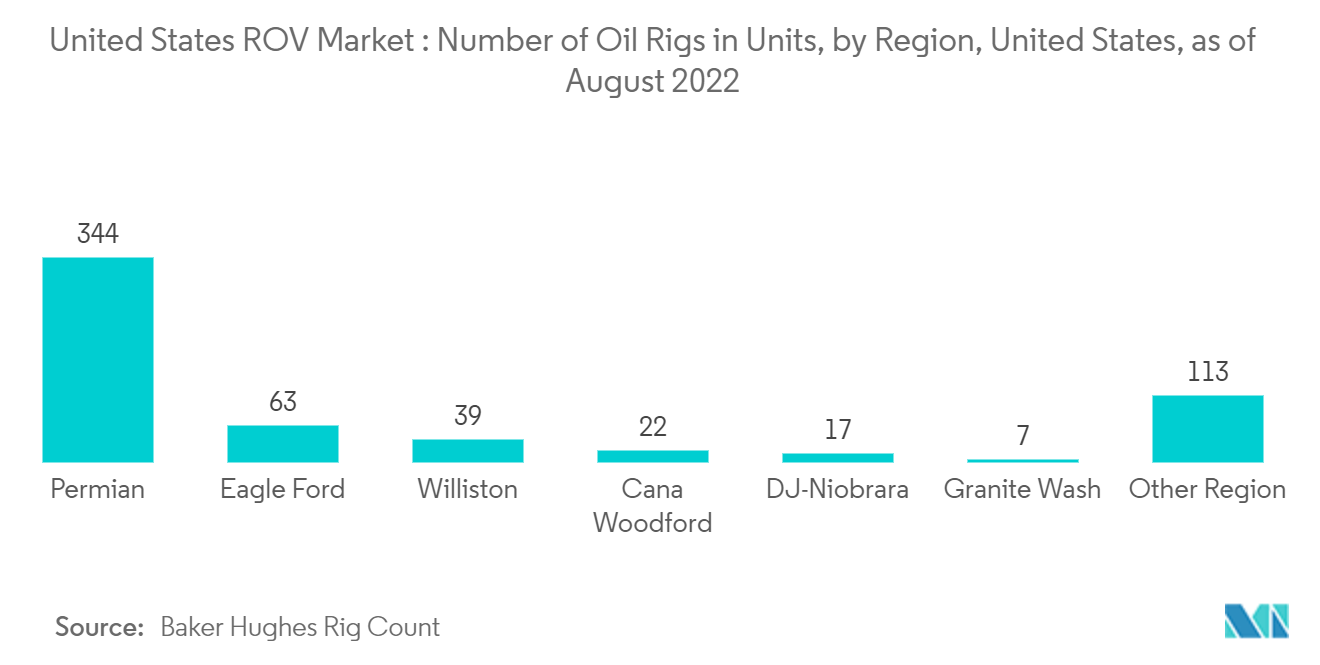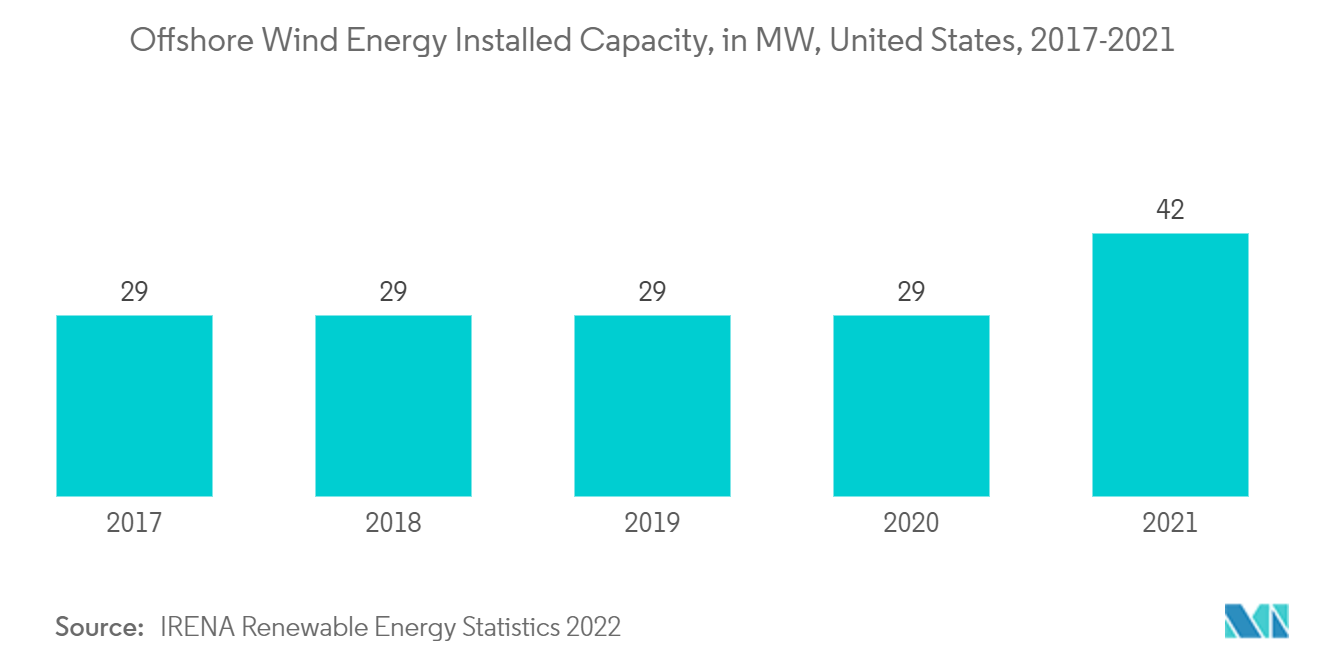Market Trends of United States ROV Industry
This section covers the major market trends shaping the US ROV Market according to our research experts:
Inspection, Repair, and Maintenance Activity to Witness Significant Growth
The utilization rates for ROV in the oil and gas industry registered a consistent decline during 2014-2017, resulting in declining day rates. Generally, the inspection, repair, and maintenance (IRM) segment is protected from volatility in oil prices, as these operations are considered necessary and unavoidable. However, the combination of a substantial decline in offshore operations and delays in some of the activities had a strong negative impact on the IRM ROV services market.
During the forecast period, the IRM segment is expected to register significant growth, mainly driven by aging offshore infrastructure, particularly in the North American region, which includes the United States and the Gulf of Mexico. These aging infrastructures require more frequent monitoring, along with frequent repair and maintenance activities.
In the offshore sector, deepwater and ultra-deepwater activities were hit harder by the decline in oil prices. During the period of downturn, the industry adopted a lower price scenario and responded with project re-engineering, efficiency gains, and better expense management, which resulted in a significant reduction of the total operating cost. All such steps have not only resulted in improving the operational efficiency in the industry but have also reduced the breakeven price of offshore deepwater and ultra-deepwater projects. Moreover, the Permian basin is the region with the largest number of oil rigs in the United States. As of August 2022, there were 344 active rigs in the basin, followed by Eagle Ford, with 63 rigs. Both basins are mainly located in Texas. The number of operational oil and gas rigs in the United States has increased again from a pandemic-induced slump on the back of tighter fuel supplies due to the Russia-Ukraine war, thus, increasing the demand for ROV in the IRM segment.
A growing number of companies are offering ROV for inspection, repair, and maintenance (IRM) services for offshore projects. Some of the major services being offered by the companies include driverless inspection, pipeline maintenance, subsea structure monitoring, and subsea engineering services. For instance, in March 2021, Houston Mechatronics Inc. announced that it had upgraded its self-developed AUV/ROV transformer, Aquanaut, a multi-purpose subsea robot that can transform an AUV into a tetherless ROV, eliminating the need for large vessels and umbilicals. The new version of this robot, Aquanaut Mk-II, has a deeper depth rating than the first model. It enables the collection of data as well as the remote operation of maintenance and repair tasks at a comparatively lower cost.
Therefore, based on the above-mentioned factors, inspection, repair, and maintenance activity is expected to witness significant growth in the United States during the forecast period.

Growing Offshore Renewable Technologies Driving the Market Demand
There has been a significant increase in energy demand over the past decade and a constant rise in awareness about global warming. This has been opening opportunities for renewable technologies. Though offshore technologies, such as offshore wind power, tidal energy, and hydrokinetic turbines or device,s are relatively niche markets, the increasing energy demand has created opportunities for harnessing these energies.
The installation of marine renewable energy structures, such as offshore wind turbines and navigational hydrokinetic devices, is expected to require a variety of visualization and monitoring equipment to appropriately survey the seafloor for initial installation, cable lay, post-installation monitoring, and maintenance tasks. Such activities can be challenging due to unstable conditions such as high tides or high ocean currents where these installations are located. In addition, the visibility is such that traditional optical solutions such as divers or cameras are not feasible, necessitating forward-looking sonars, laser imaging, or similar tools. Therefore, ROV systems come in handy in such situations and offer scalable, modular solutions and the necessary data required.
The wind energy industry is witnessing an increasing trend toward offshore wind farm installations. The new offshore wind power in the United States accounted for more than 13 MW capacity in 2021.
Moreover, in March 2022, TerraSound announced plans to invest in a new base in Massachusetts as part of its commitment to support the Vineyard Wind 1 project and wider US offshore wind developments. TerraSond is already committed to the US East Coast offshore wind industry through its site investigation surveys and operating and maintenance inspections. The Vineyard Wind 1 balance of plant work, which will add to the company's solid experience and track record, covers turbine foundation remotely operated vehicle (ROV) inspections and export and array cable seabed surveys alongside a range of other subsea integrity and operational services from across the Acteon group. Such plans for the offshore wind energy sector are expected to drive the US ROV market during the forecast period.
Therefore, based on the above-mentioned factors, the increase in offshore wind power installations is expected to drive the US ROV market during the forecast period.


